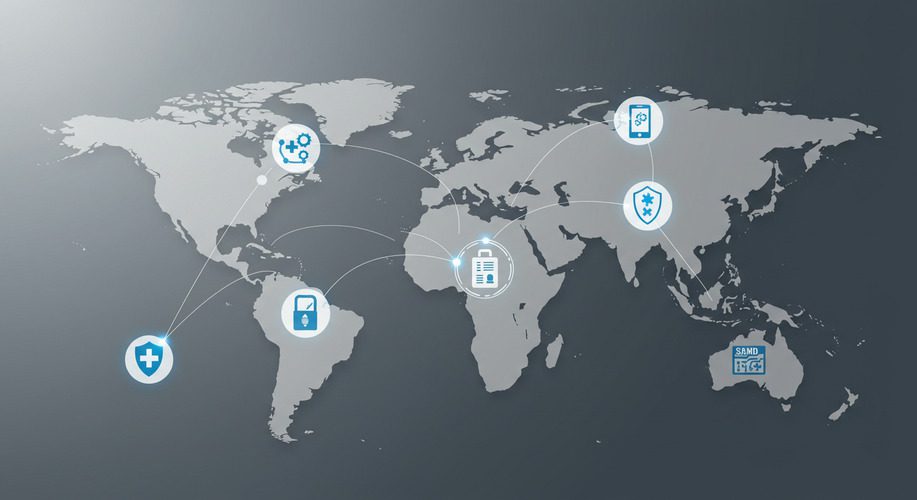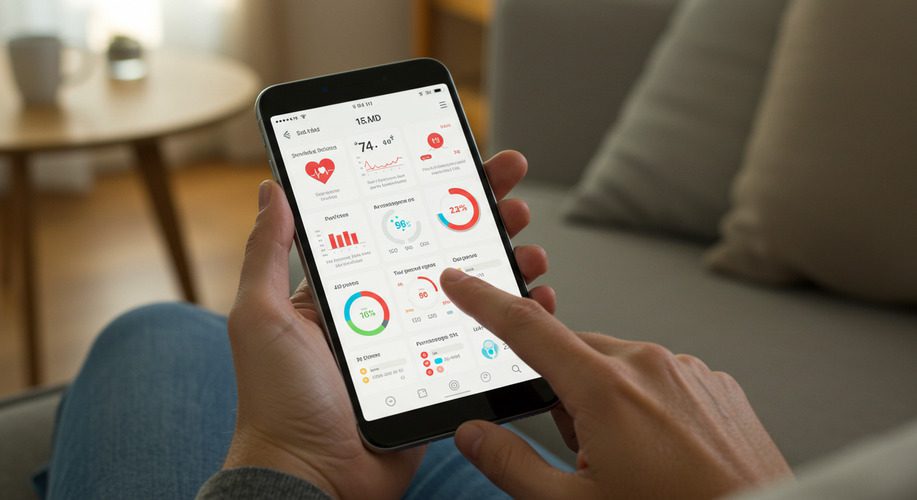
Article
Regulatory Innovation in SaMD: How Global Standards Are Evolving
By Randy Horton, VP of Solutions and Partnerships, Orthogonal
Earlier this week, Orthogonal finished compiling a list of funding announcements from January to March of 2020 for companies building Connected Mobile Medical Devices (CMMD) and Software as a Medical Device (SaMD). (Our analysis from this effort will be the subject of future blogs.). As we looked at these investments overall, it’s not a stretch to paraphrase tech pioneer and investor Marc Andreesen’s famous 2011 piece in the Wall Street Journal and argues that “software is eating medical devices.”
Today, software’s looming presence over every industry seems natural. But Andreesen’s short piece was quite prescient when it was first published a mere nine years ago1 .
For several decades, the evolution of software for medical devices has closely tracked the development of computers, software, and data management overall. As processors and electronics became continually smaller, more powerful, and cheaper relative to their horsepower, medical device manufacturers rode these broader tech trends, and MedTech software became increasingly sophisticated and valuable.
In the beginning, it was just SiMD. Software lived inside medical devices as firmware or embedded software.
The introduction of personal computers in the 1980s led to the creation of companion software applications that were installed on external computers and then physically plugged into a medical device. For example, a spirometer might have interfaced with software that was locally installed on the PC in the physician’s office.
The rise of the Internet and laptop computers in the 1990s, smartphones in the mid-2000s, and cloud computing, AI, and the Internet of Things (IoT) in the 2010s have all impacted how software is used with medical devices. Today, medical device software is often quite sophisticated and connected to remote systems and databases. This newer generation of software plays an essential role in improving the patient experience, improving health outcomes, reducing healthcare costs, and generally serving as a driver of innovation.
This trend towards an ever-greater role for software is reflected in this infographic created by Medical Device and Diagnostics Industry (MD+DI) Online is part of a special feature titled 40 Years of Medtech Milestones:
MD+DI’s four-decade look at the industry’s progress covered a wide range of milestones, of which software is only one of many enablers of progress. However, this visual also makes the point that decade by decade, software has evolved from being a component of medical innovation to being at the heart of new product launches, including CMMD and SaMD:
In other recent blogs and white papers, we’ve looked at how the adoption of digital health accelerated, with new “fuel” coming from COVID-19. We look forward to the year 2030 and seeing what MD+DI adds under a new row for the 2020s when they update this graphic (hopefully!) to cover 50 Years of Medtech Milestones.
Orthogonal is a software developer for connected mobile medical devices (CMMD) and Software as a Medical Device (SaMD).
We work with change agents who are responsible for digital transformation at medical device and diagnostics manufacturers. These leaders need to accelerate their pipeline of product innovation to modernize patient care and gain a competitive advantage.
Orthogonal applies deep experience in CMMD/SaMD and the power of fast feedback loops to rapidly develop, successfully launch, and continuously improve connected, compliant products—and we collaborate with our clients to build their own rapid CMMD/SAMD development engines.
Almost twenty years ago, we began our consulting work to create great software products in a range of industries, including financial services, education, research, and healthcare. We spent nearly a decade working with leading-edge FFL techniques that have now become recognized best practices such as Agile software development (with XP, Scrum, and Kanban), Lean User Experience (Lean UX), and Lean Startup.
Nearly a decade ago, we got a glimpse of digital healthcare and the enormous potential of the cloud, IoT, and smartphones, and the potential impact of medical device software. Realizing that’s what we wanted to focus our energies on exclusively, we narrowed our focus to the development of CMMD and SaMD. We’ve never looked back.
Our team gets up every day excited to help move the needle on healthcare. For almost ten years, we’ve helped a wide variety of firms develop and bring their regulated/connected devices to market. We’re even more excited about the next ten years and what we will help accomplish during The Great Acceleration of Digital Health.
Orthogonal applies deep experience in CMMD/SaMD and the power of fast feedback loops to rapidly develop, successfully launch, and continuously improve connected, compliant products—and we collaborate with our clients to build their own rapid CMMD/SAMD development engines. Over the last eight years, we’ve helped a wide variety of firms develop and bring their regulated/connected devices to market.
If you need help building your next CMMD or SaMD, or to learn more, contact us or call us at (866) 882-7215.
**
Randy Horton is VP of Solutions and Partnerships at Orthogonal. You can email him at [email protected].
Footnotes:
1. To see how forward-thinking he was, watch this companion WSJ interview where: …Groupon and LinkedIn investor Marc Andreessen insists that the recent popularity of tech companies does not constitute a bubble. He also stressed that both Apple and Google are undervalued and that “the market doesn’t like tech.” ↩
Related Posts

Article
Regulatory Innovation in SaMD: How Global Standards Are Evolving

Article
Implementing Real-Time Data Analytics in SaMD Solutions

Article
Navigating FDA’s Proposed AI/ML Framework for SaMD

Article
Improving Patient Engagement with SaMD Solutions